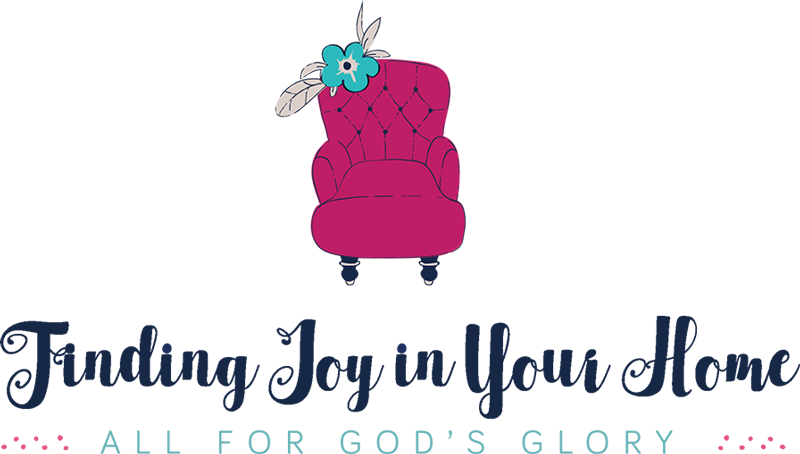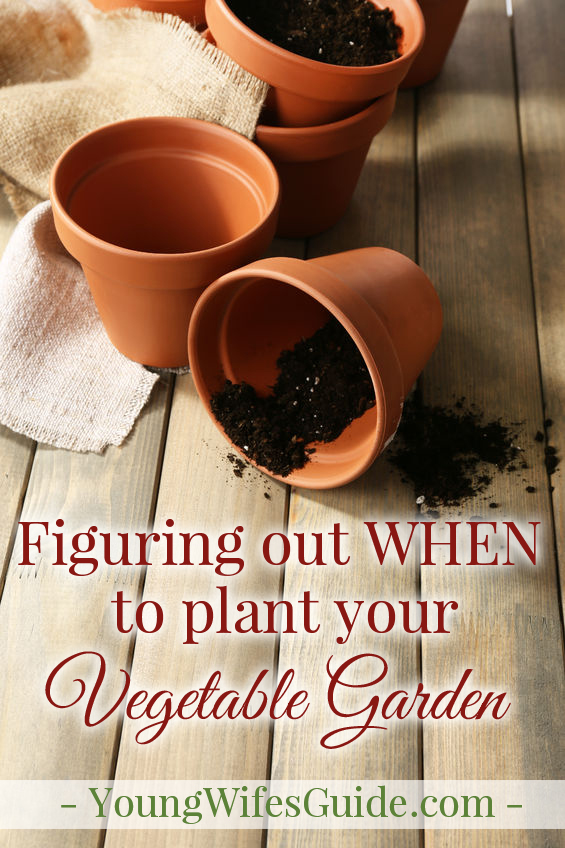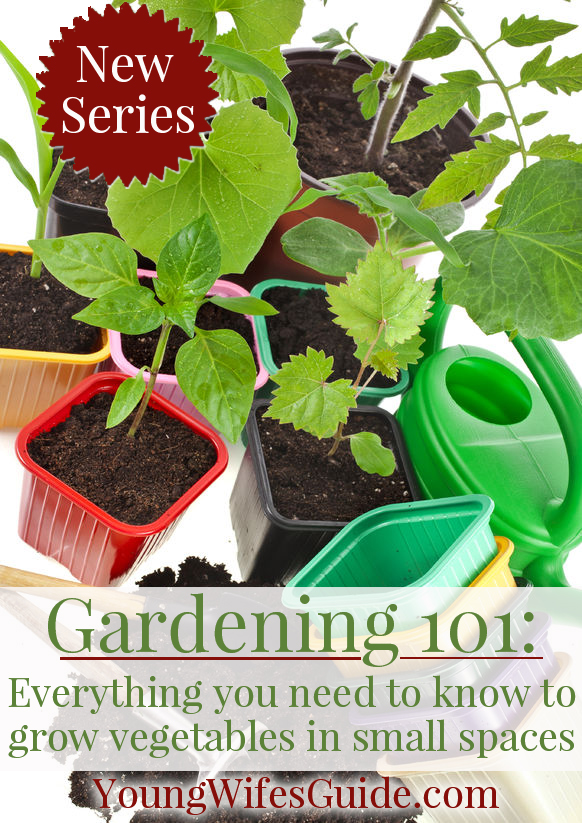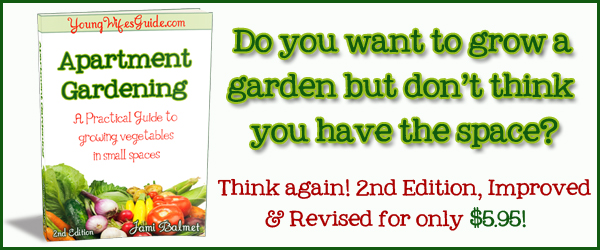When to Plant Your Vegetable Garden: Gardening 101
This post is part of our Gardening 101 series: Everything you need to know to grow vegetables in small spaces. You can see the rest of the posts in the series HERE.
You have to first know what will grow well in your area and what you can grow on your patio before you know when to plant. My first obstacle in learning how to garden was trying to figure out what in the world I could plant – and the second obstacle? Knowing when to actually plant the vegetables! Here is your basic guide for knowing when and how to get your vegetable garden started!
1) Seeds or Young Plants
The first thing that you must determine is if you want to start your garden from seeds or from young plants. Seeds are by far the cheapest option. You can get many containers of vegetables from just one $1.25 packet of seeds. I buy seeds and then use only 1/4 – 1/2 of the seeds and keep the rest for next year.
I love doing seeds because they are cheap and it’s fun to watch them grow. But they do take more work, and not all vegetables work as well from seeds.
Some vegetables can be very difficult to start from seeds and you are better off paying a little extra to buy a young plant. If you are very unsure of this whole planting thing, then just start off with young plants and worry about seeds next year!

2) Determine Your Frost Free Date
Most vegetables will not survive a frost. If you plant your vegetables outside too soon and there is a frost, they could die. So gardeners plan as best they can to plant after the last frost.
However, seeds need to be started weeks before the last frost, so some guessing is necessary at this point.
Thankfully, based on past data, we can fairly accurately predict the frosts. The NCDC has a list by state and city of first and last probable frost dates. Check out this list to get a good general idea of when your last frost will happen in your city or nearby. This will give you a good starting point.
See the website for more details on how to read the list. But basically,
“This product contains station freeze/frost probability tables for each state. Given are the dates of probable first and last occurrence, during the year beginning August 1 and ending July 31 of freeze related temperatures, probable duration where the temperature exceeds certain freeze related values; and the probability of experiencing a given temperature, or less, during the year period August 1 through July 31.”
3) Read Seed Packets for Planting Times
After you know when your last expected frost date is, it’s time to check out some seed packets. Each seed packet should give you guidelines of when to plant it, but you usually need to know your expected last frost first.
I will walk you through how to figure out when to plant with these cucumbers that I started from seed.
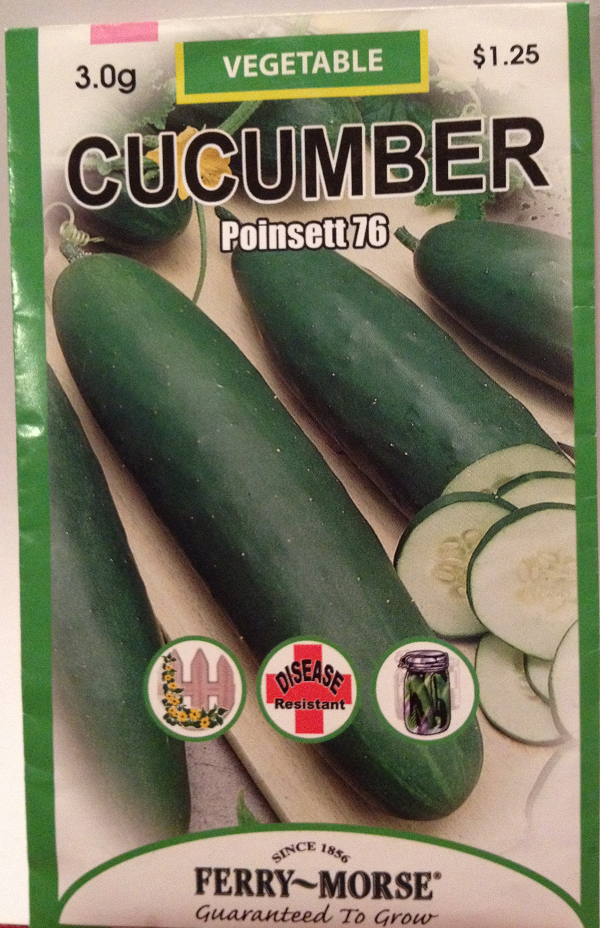
The last expected frost date where I live is somewhere around the end of January to beginning of February. This is very early, and undoubtedly many of your last frost dates will be closer to May.
So let’s take a look at the back of the seed packet.
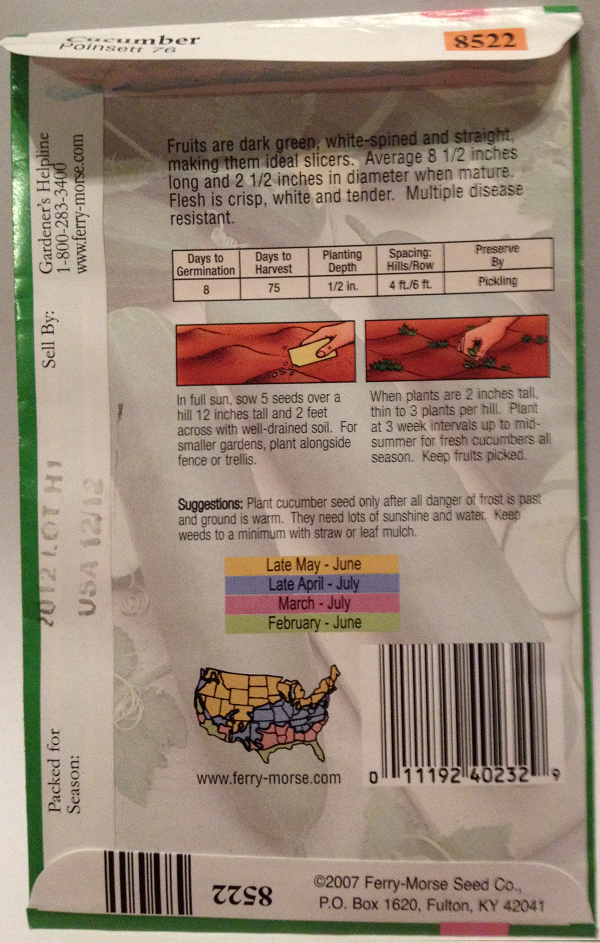
The first thing to notice is the small map of the United States. It is loosely color coded by area. Locate what color you are in (I’m in green) and then look at the legend right above it.
For these cucumbers, the legend suggests that these should be planted February-June. If you are in the Northern part of the United States, you wouldn’t plant these until at least late may (cucumbers are sun lovers).
Also, under suggestions they warn to only plant these seeds after ALL danger of frost is past. You want to make sure they won’t freeze. Because of this, you want to start the seeds indoors 4-6 weeks before your last frost. For example, if your last frost is predicted to be at the end of May, then you want to start these seeds mid-March to April.
Not all seed packets are the same
Different seed packets will read differently. Some will suggest planting seeds 6 weeks before warm weather. Simply start seeds indoors 6 weeks before your last expected frost.
Or they might simply say start 6 weeks before transplanting into the ground. In that case, again you want to start the seeds 6 weeks before the last frost as after the last frost you can bring them outdoors.
What you need to know: The Bottom Line
Basically, if you can determine your frost free date from the link above then you want to start your seeds indoors about 4-6 weeks before that date. Refer to specific seed packets for more detailed information. And if you are starting from young plants, feel free to get them in the ground anytime after your frost free date!
More in this series:
- Introduction to Container Gardening
- Determining What to Plant
- When to Plant Your Garden (you are here)
- Starting Your Seeds
- More coming soon!
If you don’t want to wait, you can get my eBook, Apartment Gardening ~ A Practical Guide to Growing Vegetables in Small Spaces and download it instantly! It has everything you need to know to get started gardening today! Find out more HERE.
